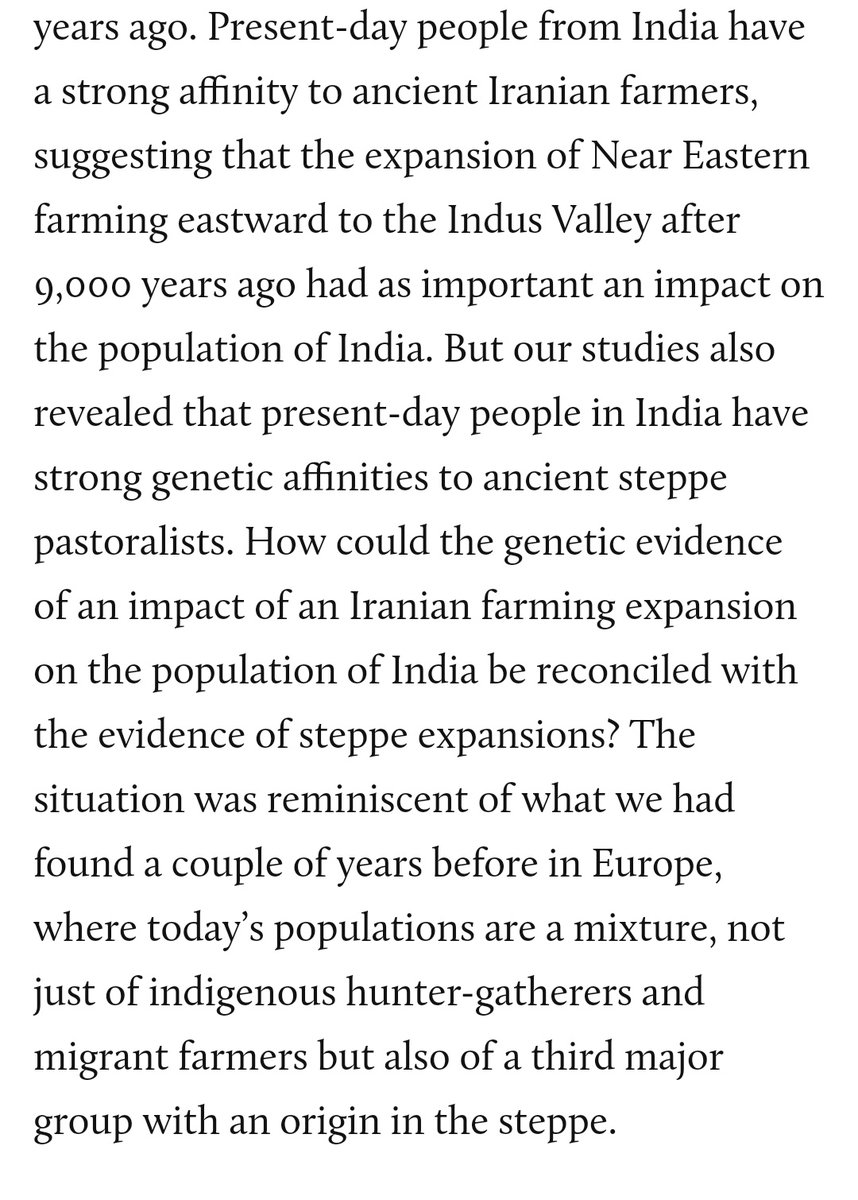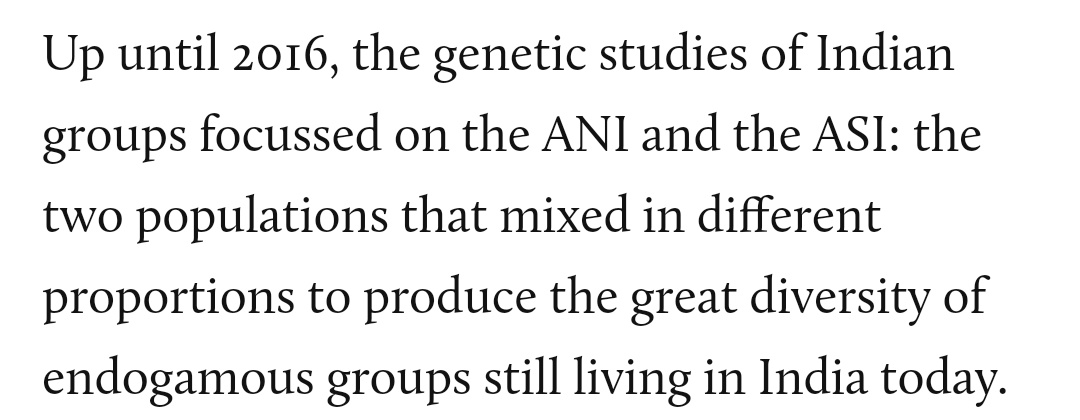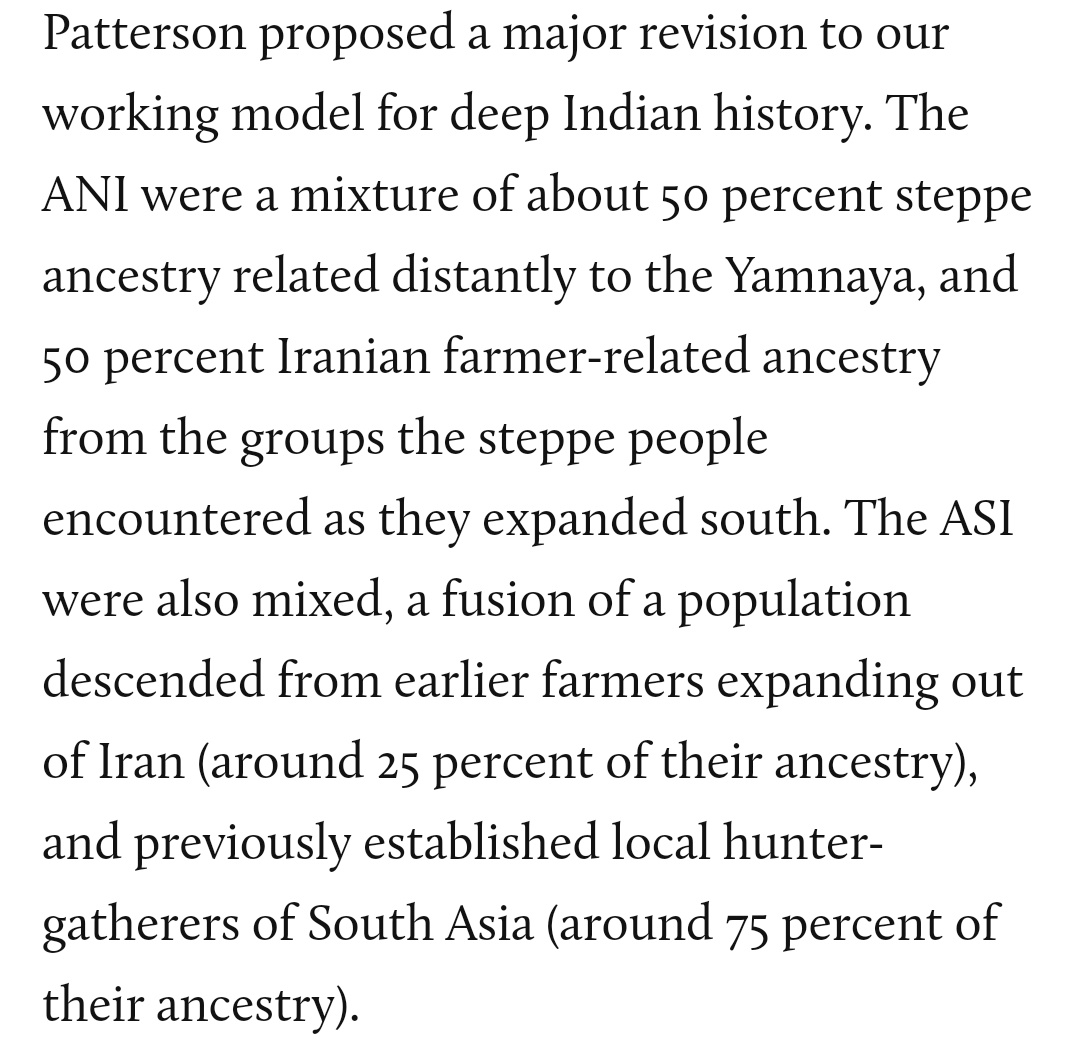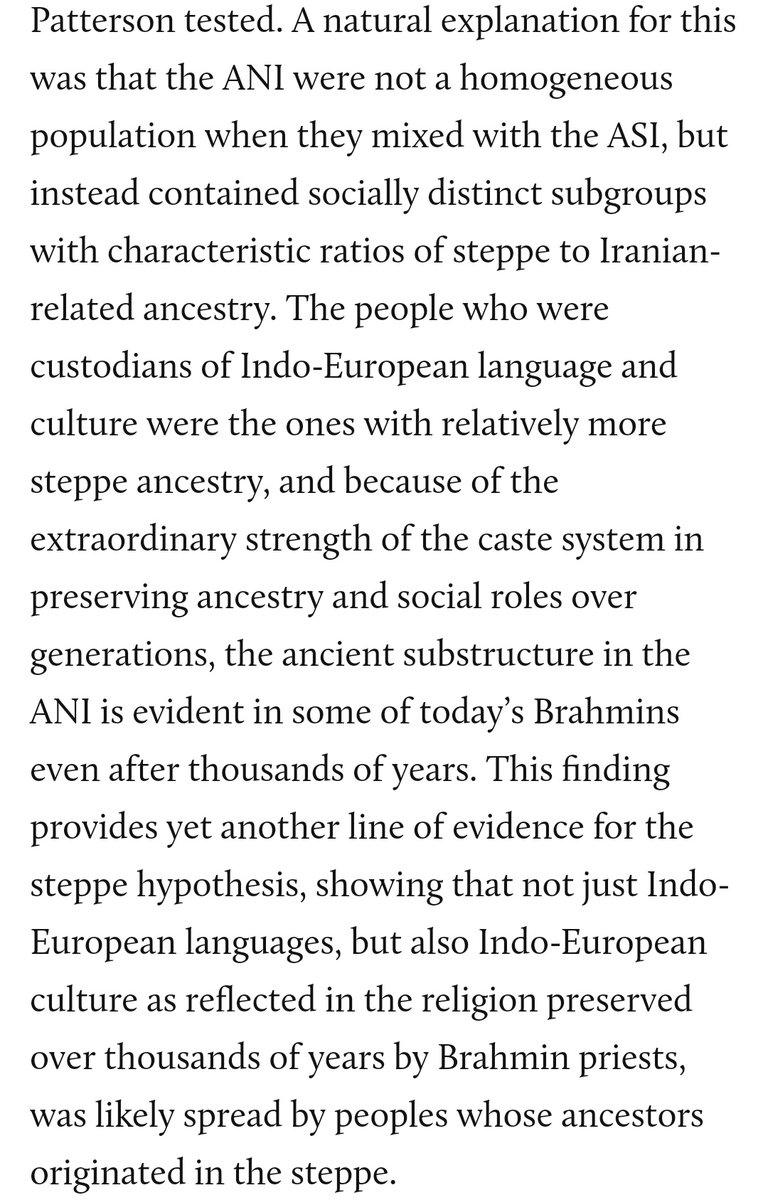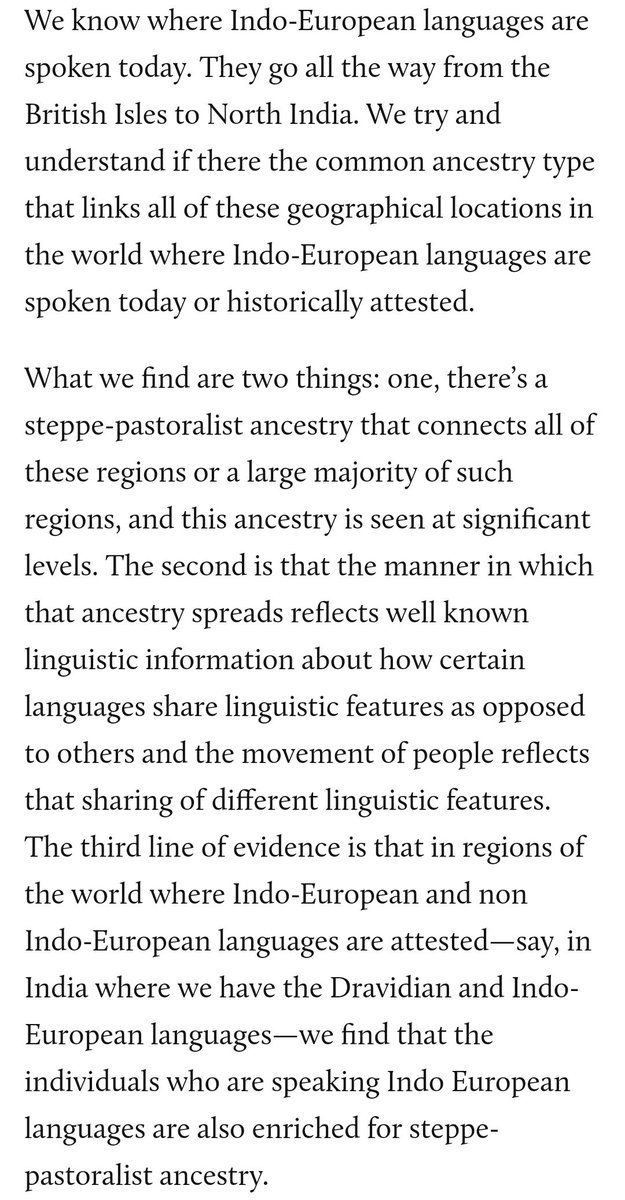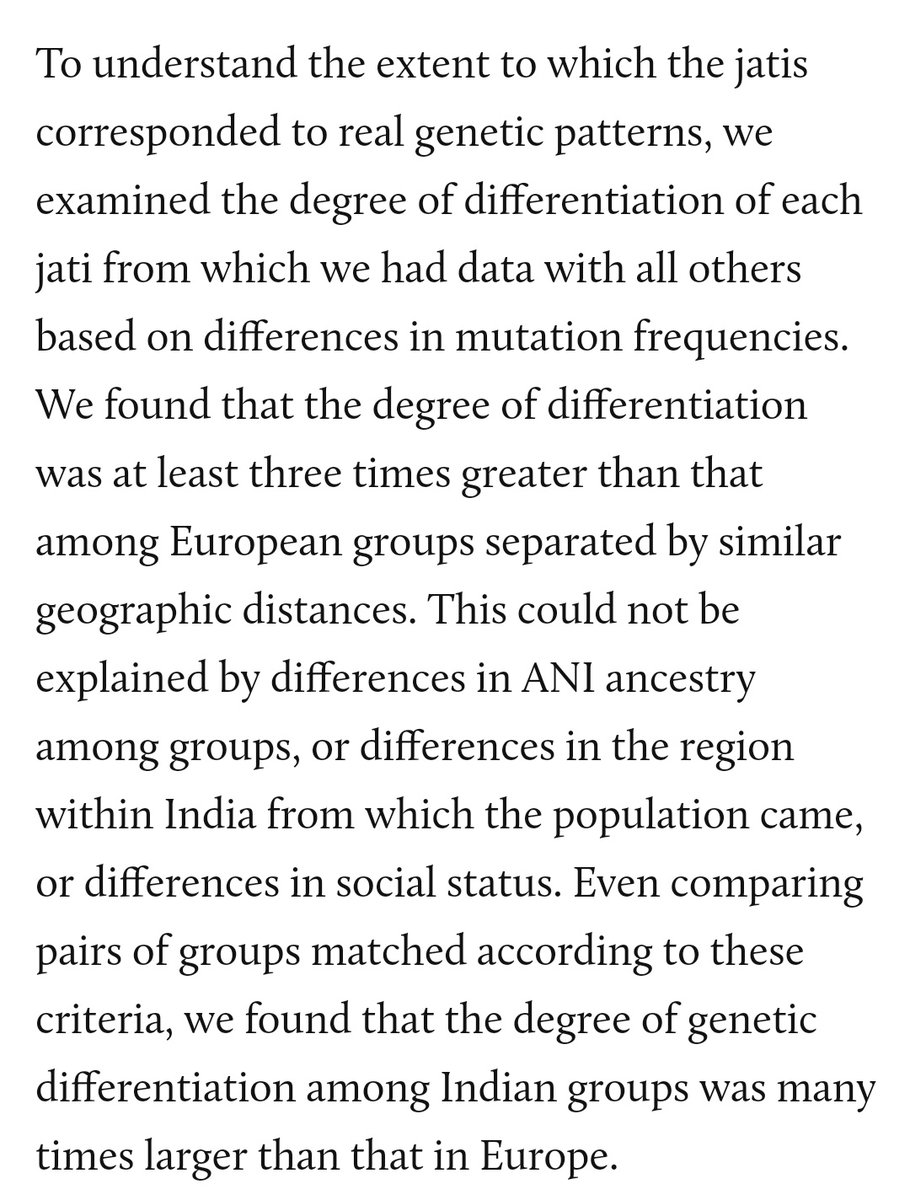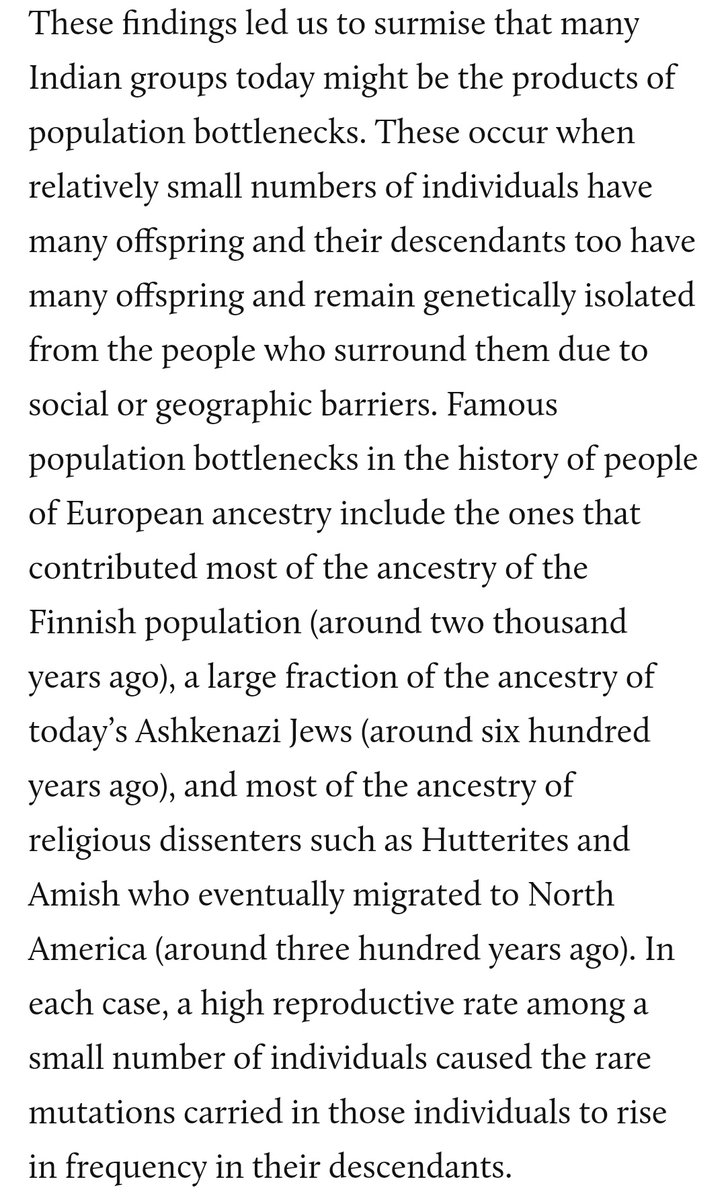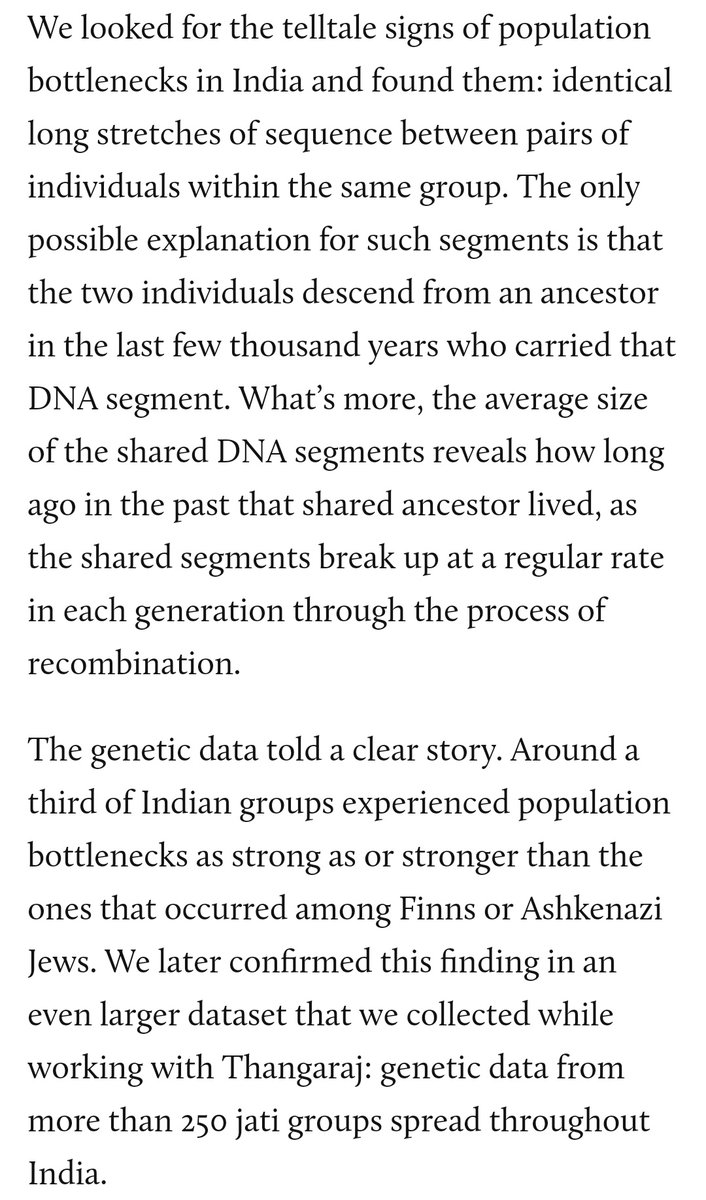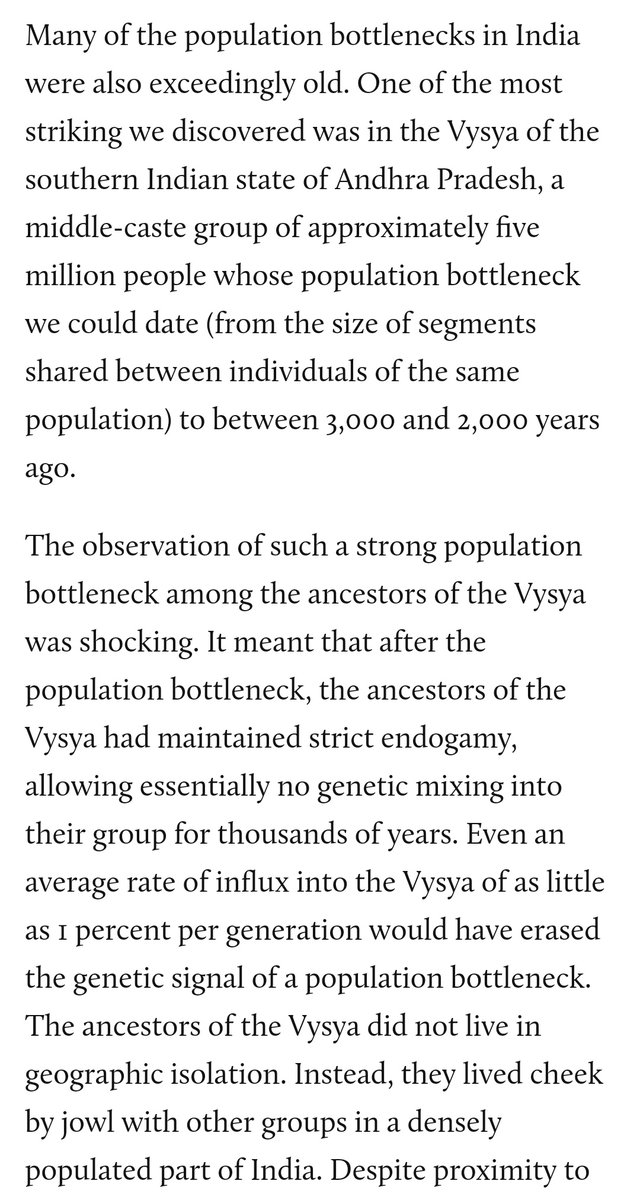An excerpt from Reich& #39;s own book "Who awe are and how we got here" https://caravanmagazine.in/science-technology/what-genetics-reveals-about-indian-origins">https://caravanmagazine.in/science-t...
1. Uptil 2016 genetic studies of Indian groups focused on the ANI and ASI
2. Post 2016, they realised present day Indians have strong affinity to ancient Iranian farmers ( might have migrated ~9000 years ago)
3. They also have strong affinity to ancient steppe pastoralists
2. Post 2016, they realised present day Indians have strong affinity to ancient Iranian farmers ( might have migrated ~9000 years ago)
3. They also have strong affinity to ancient steppe pastoralists
4. Almost every group they analysed had ancestry from all 3 populations - Little Andaman Islanders (related to much earlier wave of migration out of Africa), Ancient Iranian farmers (~9000 years ago), Ancient steppe pastoralists ( ~4000 years ago).
7. It was the Yamnaya pastoralists speaking an Indo-European language that mixed with the previously established farming population they entered along the way to eventually form the ANI in India
8. Of all the groups they analysed, 6 stood out as having a higher ratio of steppe ancestry compared to ancient Iranian farmer ancestry. All 6 groups were Brahmins, despite them being 10% of total groups tested.
9. Indo-European culture as reflected in the religion preserved by Brahmin priests, was likely spread by peoples whose ancestry originated in the steppe.
10. Subsequent to Reich& #39;s book, we also have the Rakhigiri results which show that Indus Valley civilization DID NOT have any steppe DNA markers. https://caravanmagazine.in/vantage/indus-valley-genetic-contribution-steppes-rakhigarhi">https://caravanmagazine.in/vantage/i...
11. There& #39;s a steppe pastoralist ancestry that connects all the IE language speaking populations regions. In regions like India where both Dravidian and Indo-European languages are spoken, we find that the individuals speaking IE languages are enriched for steppe ancestry
12. Putting points 9-11, if the IVC was pre Indo-European, pre Vedic, pre Brahminic and therefore should also be Pre-Caste? Did the steppe pastoralists bring it?
Of course the steppe pastoralists did not take caste to any of the other regions they took the language to.
Of course the steppe pastoralists did not take caste to any of the other regions they took the language to.
13. Although wikipedia does note that the groups of Brahmins, Kshatriyas and Vaishya have parallels with other Indo-European societies
14. Reich does touch upon castes as well. First he notes that jatis had 3 times the degree of genetic differences compared to each other vs European groups separated by similar geographic distances
15. This leads to the surmise that many Indian groups might be the products of & #39;population bottlenecks& #39;
16. About a third of the groups experienced population bottlenecks as strong or stronger than two other reference points (Finn& #39;s & Ashkenazi Jews)
17. The Vysya community of Andhra has been likely practising endogamy from at least 2000 years. Even an average rate of influx of genetic material into the Vysya of 1% per generation would have erased a genetic signal of a population!
18. Article roughly dates penning down of the Manusmriti - that codified some laws of caste to 200 AD.
Ambedkar says in & #39;The Untouchables& #39; that it certainly was written just after the killing of Buddhist emperor Brihadratha by Brahminic Pushyamitra Sunga https://www.dailyo.in/lifestyle/hindus-manu-dharmashastra-manusmriti-vedas-devdutt-pattanaik-mythology/story/1/15412.html">https://www.dailyo.in/lifestyle...
Ambedkar says in & #39;The Untouchables& #39; that it certainly was written just after the killing of Buddhist emperor Brihadratha by Brahminic Pushyamitra Sunga https://www.dailyo.in/lifestyle/hindus-manu-dharmashastra-manusmriti-vedas-devdutt-pattanaik-mythology/story/1/15412.html">https://www.dailyo.in/lifestyle...

 Read on Twitter
Read on Twitter